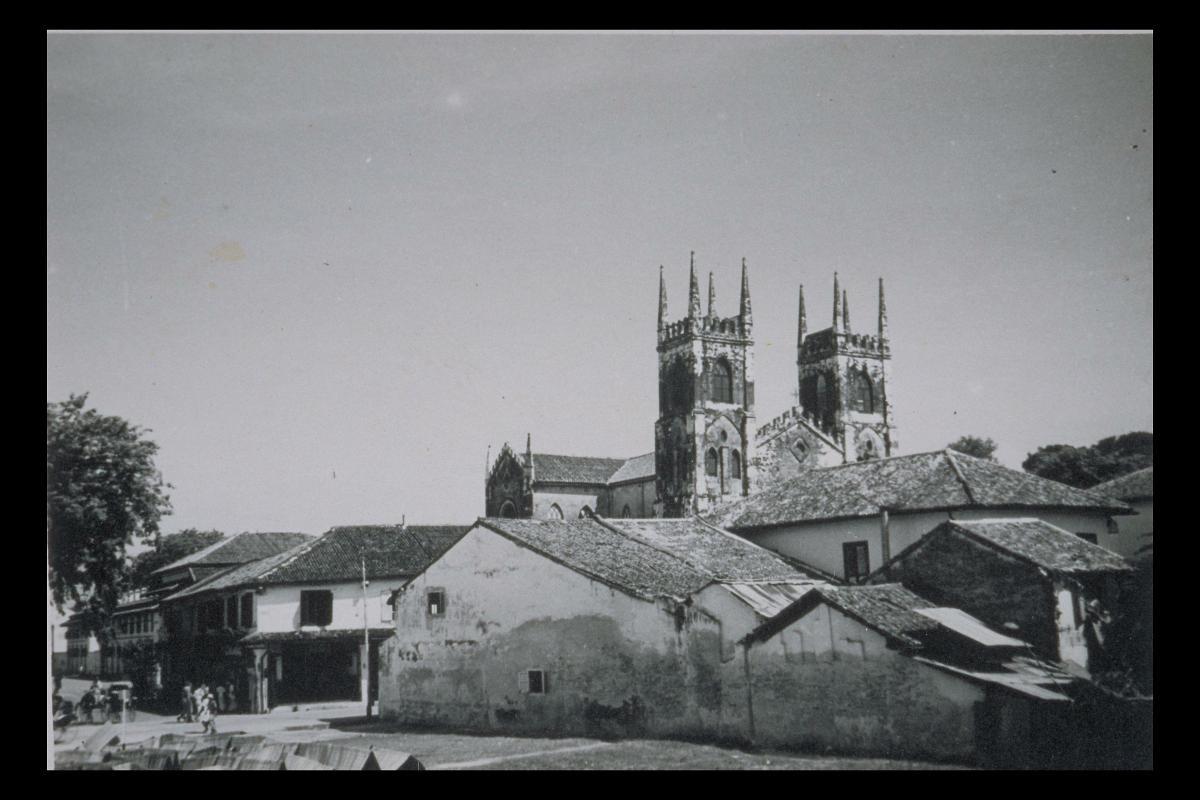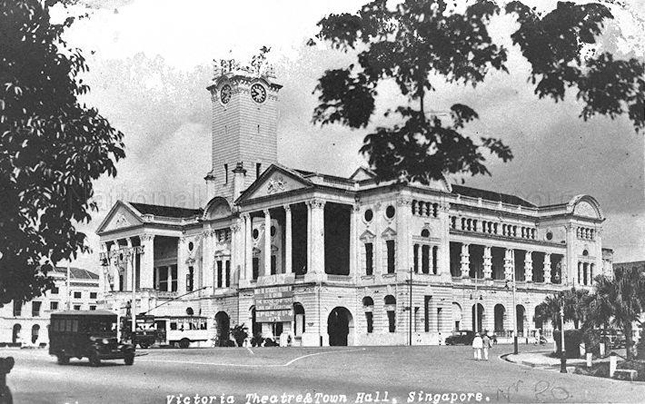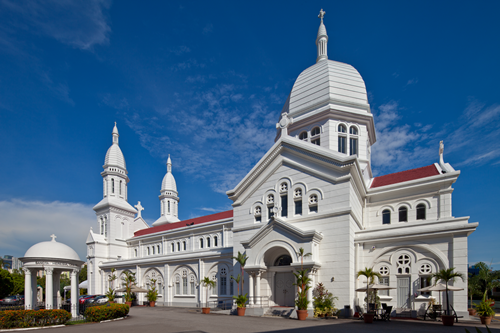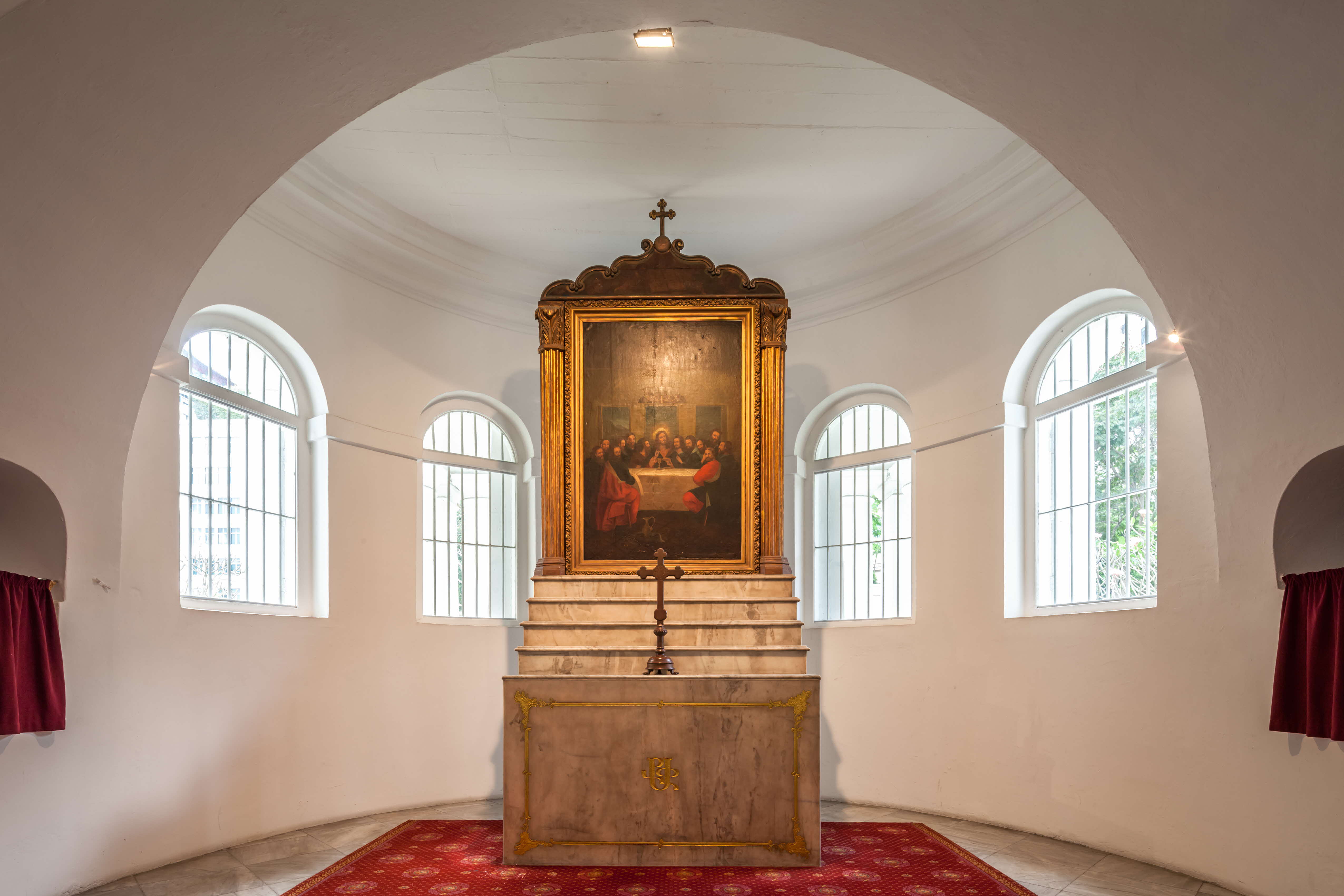Saint Joseph’s Church on Victoria Street was the headquarters of the Portuguese Mission in Singapore. It is one of Singapore’s oldest Catholic churches. Together with other Catholic churches such as Cathedral of the Good Shepherd, Church of Saints Peter and Paul, and Church of Our Lady of Lourdes, Saint Joseph’s Church was situated in what used to be the European town in colonial Singapore. The church edifice is not only a monument to the contributions of the Portuguese and Portuguese Eurasian communities, but also to the Catholic missionaries’ commitment to provide education for children.
Portuguese Mission in Singapore
The Portuguese Mission in Singapore was established by Father Francisco da Silva Pinto e Maia of the Congregation of Priests of the Missions (commonly referred to as the Vincentian or Lazarist Fathers), a Portuguese missionary who arrived from the Portuguese colony of Macau in 1825. Initially, Father Maia offered Holy Mass in the residence of former naval surgeon Jose d’Almeida Carvalho e Silva, also a Portuguese, on Beach Road, where Raffles Hotel stands today. D’Almeida became one of Singapore’s leading merchants in early colonial Singapore. Like many European immigrants who established their businesses in Singapore, he was attracted to the British trading port due to its strategic location and abundant business opportunities.
On 14 December 1851, the foundation of the Portuguese Mission’s new church was laid by the vicar, Father Vicente de Santa Catarina. The church was built with funds collected from the public – both Catholics and non-Catholics – and a generous donation from King Ferdinand II of Portugal. In addition, Father Maia had bequeathed all his personal properties and assets to the cause of building the new church in his will. Father Maia had passed away in 1850 and was buried in the Portuguese Catholic cemetery that was once situated on present-day Fort Canning Hill. The new church, dedicated to Saint Joseph, was completed and blessed in 1853.
Jurisdiction of Catholics in Singapore
At that time, there was a conflict over the jurisdiction of Catholics in Singapore between the French Siamese Vicariate and the Portuguese Archdiocese of Goa. The dispute was resolved only following the Concordat of 1886 from the Holy See to the Kingdom of Portugal. Since then, the French and Portuguese missionaries coexisted peacefully, with the French Mission based in the Church of the Good Shepherd and the Portuguese Mission in Saint Joseph’s Church.
New Church
Over the years, the congregation grew steadily, and a larger church was in order. Bishop João Paulino de Azevedo e Castro of Macau laid the foundation stone on 21 August 1904, but work only began in 1906 after the old Saint Joseph’s Church was demolished. A makeshift wooden structure was put up to accommodate the parishioners during Masses.
The design of the church was entrusted to Messieurs G. A. Fernandez and Company. However, the construction was halted due to unforeseen circumstances. When work resumed, David McLeod Craik – who was then in private practice before he joined the renowned firm Swan & Maclaren – assumed the role as the project’s architect. He opted for a Neo-Gothic design instead of the Renaissance-style church which Messieurs G. A. Fernandez and Company had proposed.
In 1912, the church was finally completed and solemnly blessed on 30 June by the same Bishop Castro. The former headquarters of the Portuguese Mission (present-day Parochial House) was also constructed concurrently with the church and boasts several architectural merits in its own right.
Architecture and Furnishings
Built in the plan of a Latin cross, Saint Joseph’s Church was designed in the Neo-Gothic style, which is characterised by the generous use of lancet arches in its doorways and fenestration. The church has an octagonal belfry, capped with a dome and surmounted by a cross. On either side of this belfry are two smaller cupola-like towers. Typical Portuguese blue-and-white ceramic tile-work called azulejo decorates the front façade. Added in 1950 to commemorate the visit of the Pilgrim Statue of Our Lady of Fatima from Rome, this beautiful tile-work depicts scenes of the apparition of the Blessed Virgin Mary in Fatima, Portugal, in 1917.
Inside the church, a statue of Saint Joseph, the patron of the church, is enshrined on the marble high altar in the sanctuary. Statues of Jesus, Virgin Mary, and saints are installed on altars and pedestals that surround the entire church interior. Many of these saints were associated with either Portugal or the Portuguese Empire at large: Saint Anthony of Padua was born in Lisbon, Portugal; Saint Francis Xavier embarked on extensive missions to Portuguese colonies in Asia such as Goa and Malacca; and Saint Nuno Álvares Pereira, a Portuguese general who retired from the military to become a Carmelite friar.
Stained-glass and coloured-glass windows – also a prominent element of Neo-Gothic architecture –illuminate the interior. In fact, Saint Joseph’s Church has one of Singapore’s largest collections of religious stained-glass windows. These magnificent windows were produced by Jules Dobbelaere, a Belgian who was arguably the world’s most well-known stained-glass craftsman of his time. He was also commissioned to make the equally exquisite stained-glass windows for the Chapel of the Former Convent of the Holy Infant Jesus. Of interest is the stained-glass window of Saint Catherine of Alexandria, which Craik also dedicated in memory of his daughter Catherine, who had died at sea en route from Penang to Singapore. An image of a boat sailing on the sea immortalises the unfortunate incident.
Schools for the Children
Besides administering to the local Catholic community, the Portuguese Mission also played an active role in children’s education. Concerned with the high illiteracy rate among the children of poor parishioners, Father José Pedro Santa Anna de Cunha, the assistant to the parish priest, established Saint Anna’s School in a little house on Middle Road in 1879 to provide free tuition to children. As the enrolment grew, the Portuguese Mission decided to build proper school buildings within the grounds of Saint Joseph’s Church. Construction of the new school began in late 1885 and was completed within a few months. The school later became Saint Anthony’s Convent for girls and Saint Anthony’s Boys’ School. Although the schools have since moved to new premises, the former school buildings remain as reminders of the Portuguese Mission’s involvement in education.
Saint Joseph’s Church Today
The jurisdiction of Saint Joseph’s Church was transferred to the Archdiocese in Singapore in 1981, and the Portuguese Mission was subsequently dissolved in 1999. In addition to the Eurasian community, Catholics of all races worship in the church today. The church still adheres to the age-old tradition of religious processions, most notably the Good Friday Procession and the monthly procession in honour of Our Lady of Fatima.
Our National Monuments
Our National Monuments are an integral part of Singapore’s built heritage, which the National Heritage Board (NHB) preserves and promotes for posterity. They are monuments and sites that are accorded the highest level of protection in Singapore.














